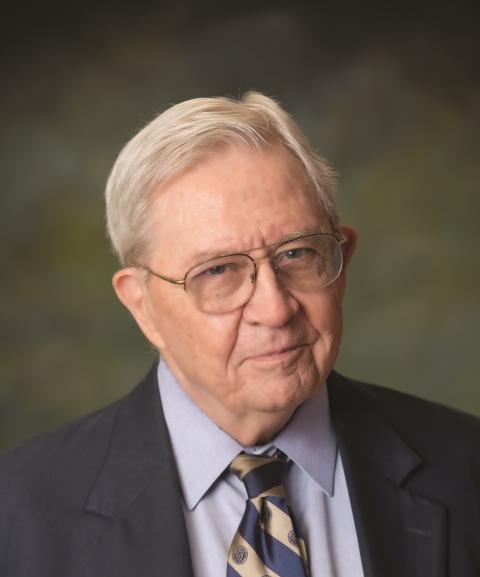In a loss felt deeply by the public health community, especially by its leaders, physician and epidemiologist D.A. Henderson, MD, MPH—known for leading the global campaign in the 1960s and 1970s that eradicated smallpox—died on Aug 19 at age 87 in a Baltimore hospital from hip fracture complications.
A disfiguring, blinding disease that can be fatal, especially in children, smallpox is one of only two infectious diseases to be eradicated, thanks to vaccine campaigns in the 19th and 20th centuries. As recently as 1967, smallpox sickened 15 million and killed 2 million.
Instincts drove policies at various levels
Donald Ainslee Henderson, an Ohio native, received his medical degree in 1954 from the University of Rochester School of Medicine and his public health degree in 1960 at the Johns Hopkins School of Hygiene and Public Health. At the time of his death, he was a distinguished scholar at the University of Pittsburgh Medical Center (UPMC) Center for Health Security.
He spent the bulk of the 1950s and 1960s working in the epidemiology branch of the Centers for Disease Control and Prevention (CDC), where he served as chief of the Epidemic Intelligence Service (EIS). In 1966, he was tapped to lead the World Health Organization's global smallpox eradiation campaign.
The next career moves took him to the Johns Hopkins School of Public Health, and the US government as an advisor and as director of the Office of Public Health Emergency Preparedness. In 1998 he founded the Johns Hopkins Center for Civilian Biodefense Strategies, which is now the UPMC Center for Health Security.
Tom Inglesby, MD, the center's director, said in an Aug 20 statement that Henderson truly changed the world for the better, from leading the smallpox effort, to advising presidents, to garnering honors from countries across the globe. He said Henderson's influence is widely felt by schools of public health, having changed the way students are taught.
"With all of that, he still took the time to be a mentor to countless young people, and was a great friend. He is truly irreplaceable, and I will miss him," Inglesby said.
Ground-breaking solutions rooted in history
Amesh Adalja, MD, senior associate at the Center for Health Security, said Henderson was a continuous and active participant in the center's work, except for when he was called to Washington, DC, to provide guidance during the anthrax attacks.
Remaining involved with all smallpox matters, Henderson was a vocal proponent of destroying the last remaining stocks of the virus and was interested in how the United States would respond in the event of a smallpox attack, pushing for the need for a concept of operations, Adalja said. Also, Henderson closely tracked vaccine development, and in recent years spent lots of time documenting the history and operations of the smallpox eradication program, which is available online at http://www.zero-pox.info/.
"D.A. was also intimately familiar and an active contributor to discussions of every emerging infectious disease outbreak that occurred, including Zika," Adalja said.
Henderson was known for his razor-sharp intellect and incisive reasoning when it came to solving infectious disease problems, he said. "He was always providing path-breaking insights that integrated his knowledge of historical infectious disease epidemiology with current problems."
As a teacher who made time for anyone at the center, no matter their training level, Henderson had a true passion for infectious diseases and prioritized engaging younger generations. "I feel the field of infectious diseases has lost its commander-in-chief," Adalja said.
Imposing figure with a soft side
Michael Osterholm, PhD, MPH, director of the University of Minnesota's Center for Infectious Disease Research and Policy (CIDRAP), which publishes CIDRAP News, was friends with Henderson since about 1980, and said that Henderson's straddled two important public health concepts.
One is that right is right, even if nobody's right, and wrong is wrong, even if everybody's wrong. The other is if you're not living on the edge, you're taking up too much room, he said.
In other words, Osterholm said, "there's no room for complacency and acceptance when important public health issues are on the line."
With his tall stature and booming voice, Henderson was an imposing person in life, but was also known for having an incredibly soft side, he said. To mark Osterholm's last day with the Minnesota Department of Health in 1999, Henderson sent him his cherished copy of Vital Statistics, an 1885 book by British epidemiologist and surveillance data pioneer William Farr. The book contains annotations from Henderson's mentor Alexander Langmuir, an epidemiologist who founded the CDC's EIS.
Henderson is survived by his wife, Nana, daughter, Leigh, and sons Douglas and David.
See also:
Aug 20 UPMC Center for Health Security statement




















